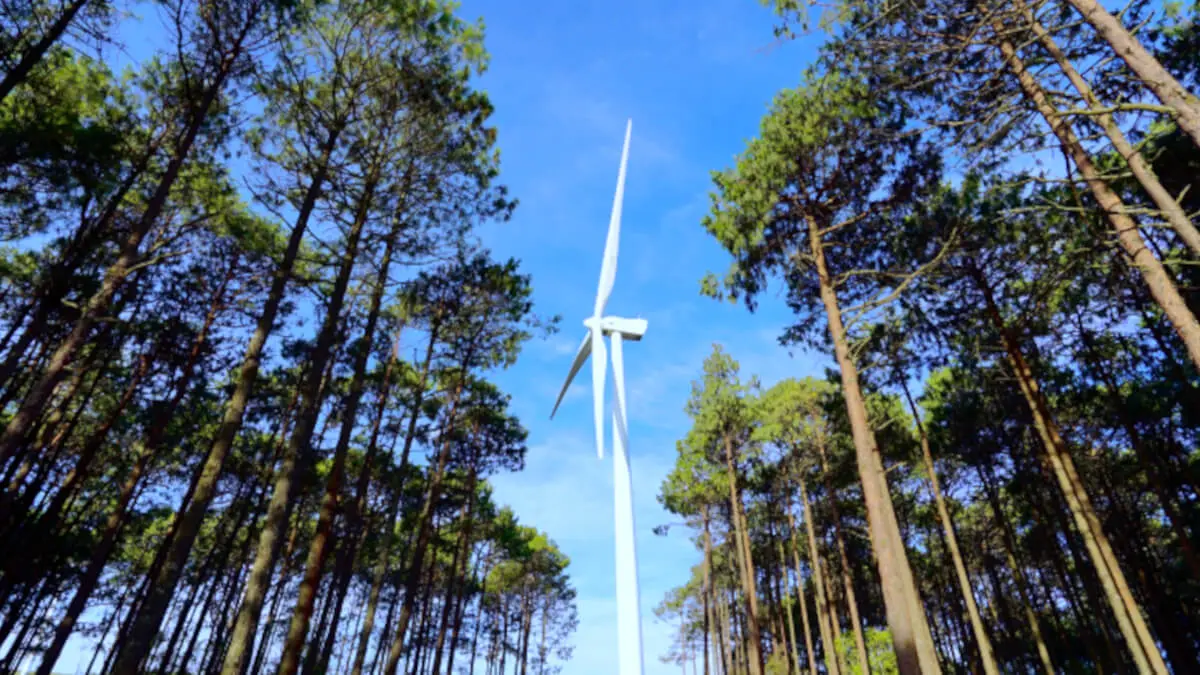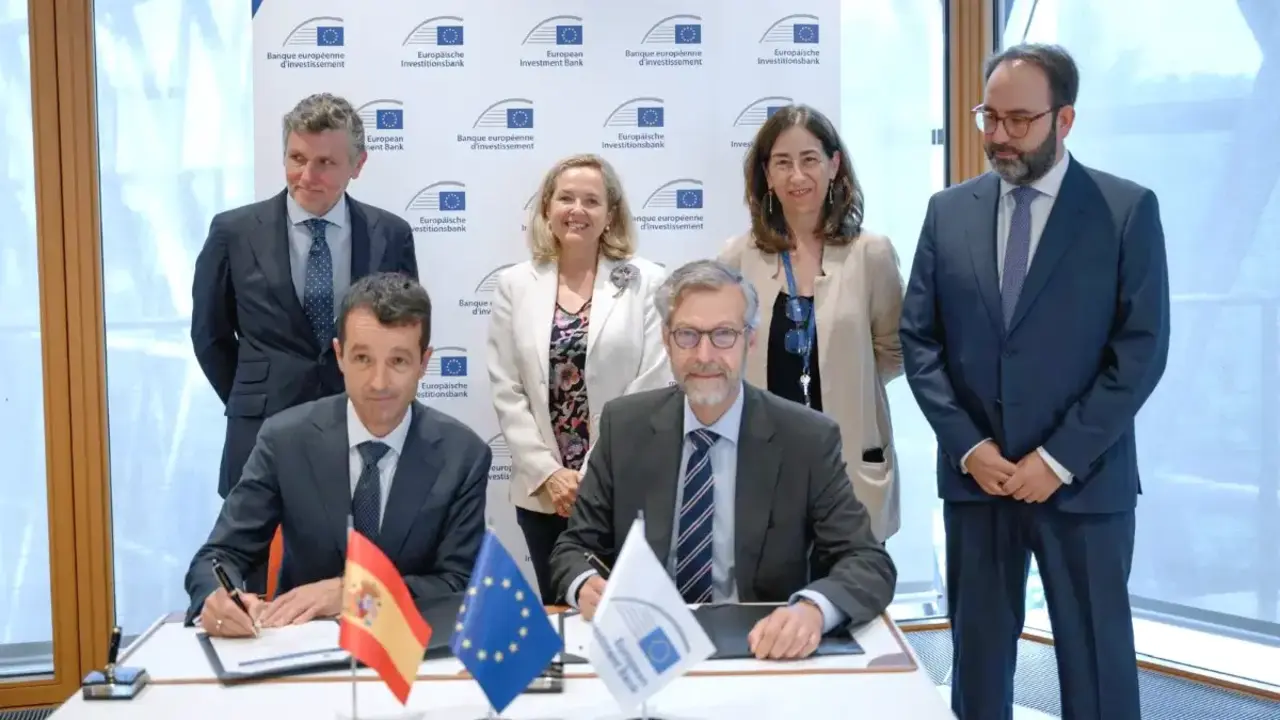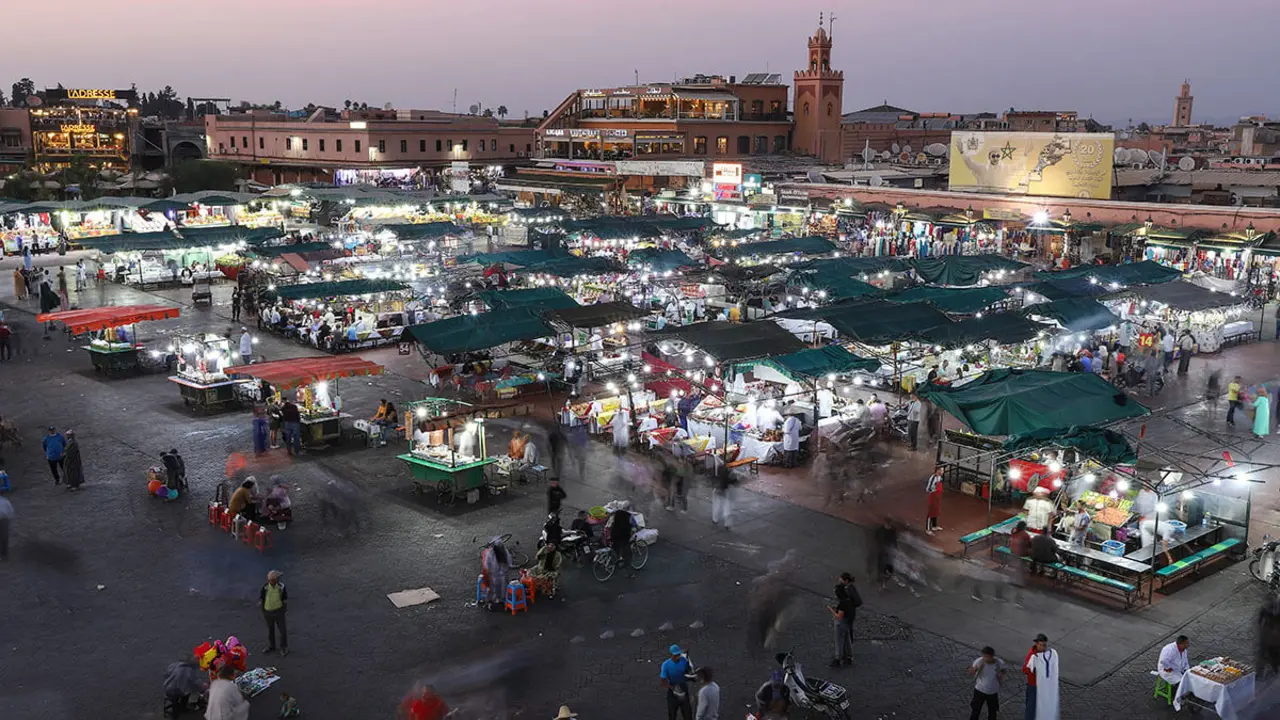Iberdrola leads the construction of the largest wind farm in Portugal

- Advanced technology and impact on the local economy
- Innovative environmental measures
- Tâmega Power Plant System
Iberdrola has received production authorisation from Portugal's Directorate General for Energy and Geology (DGEG), representing another step towards the construction of Portugal's largest wind farm. This will mean sharing the connection point and the electricity evacuation line, which will include an extension of the substation, already planned in the initial design of the project.
With an installed capacity of 274 MW and a production capacity of 601 GWh per year, equivalent to the consumption of 128,000 homes, this infrastructure will be integrated into the Tâmega Power Plant System (SET). The project, which will benefit from the existing connection point in Ribeira de Pena, will sign a long-term power supply contract, also known as PPA.
This project, which consists of the Tâmega Norte and Tâmega Sul wind farms, is part of an agreement signed with the Norwegian sovereign wealth fund, managed by Norges Bank Investment Management. The incorporation of wind energy in the Tâmega Complex will increase the contribution of clean, competitive, and low-cost energy to the Portuguese electricity system, guaranteeing the maximum supply of green energy, originally authorised for each project, for as long as possible.
The reduction in CO2 emissions comes not only from 100% green energy production, but also from the construction of the project, which, being integrated into the environment of the Tâmega Complex, significantly reduces the environmental impact by making use of existing infrastructure, roads, and facilities.
In addition, at peak times, some 700 jobs will be created in areas such as civil engineering, wind turbine assembly, substations, and transmission lines. The project will strengthen the country's energy independence, which will make an important contribution to achieving the objectives of the National Energy and Climate Plan.
Alejandra Reyna, Director of Iberdrola Renovables Portugal, underlines: ‘We have taken a crucial step towards the construction of the largest wind farm, and the first hybrid project combining wind and hydro power, in Portugal. This project shows Iberdrola's commitment to promoting the energy transition in Portugal, where it has already invested more than EUR 2 billion in renewable energy over the last 20 years. This commitment to electrification, through renewable energy and a focus on innovation, shows our commitment to building a sustainable, reliable, and affordable future.’
Advanced technology and impact on the local economy
The wind project has been awarded to Vestas and will consist of the installation of 38 latest generation wind turbines, the Vestas Enventus V172, with a unit capacity of 7.2 MW and a height of 114 metres.
The alternation between hydro and wind technologies will significantly reduce the dependence on intermittent environmental conditions and the constraints of scarce resources such as wind. This will promote greater stability of renewable energy production and optimisation of infrastructure.
As with all renewable energy projects in Portugal, the focus on local suppliers will be key: companies such as CJR and Conduril-Socorpena will also be involved in the development of the basic structure, while Painhas and Proef will be involved in the construction of the substation and lines, which will be commissioned in early 2025.
Innovative environmental measures
Preserving the ecosystem is an essential element when building this type of project. Iberdrola will implement continuous monitoring systems for environmental factors during construction to monitor birds, flora, habitats, and archaeology to mitigate potential impact, identify novel solutions to minimise impact and gain a deeper understanding of local biodiversity.
Tâmega Power Plant System
The Tâmega Power Plant is one of the most important hydroelectric projects carried out in Europe in the last 25 years. With a total investment of more than 1.5 billion euros, it consists of three power plants: the Alto Tâmega Hydroelectric Power Plant, with an installed capacity of 160 MW, the Gouvães Pumped Storage Power Plant (880 MW) and the Daivões Power Plant (118 MW). The latter two have been in operation since 2022.
The three plants have a total installed capacity of 1,158 MW, which represents an increase of 6% of the country's total installed electricity capacity. Thus, the complex can produce 1,766 GWh per year, enough to meet the energy needs of neighbouring municipalities and the cities of Braga and Guimarães (440,000 households). In addition, this renewable infrastructure has a storage capacity of 40 million kWh, equivalent to the energy consumed by 11 million people 24 hours a day in their homes.
The Tâmega Complex will eliminate the emission of 1.2 million tonnes of CO2 per year, which is equivalent to removing approximately 260,000 combustion vehicles from the roads each year. This will make it possible to diversify production sources, preventing the import of more than 160,000 tonnes of oil per year. The positive impact on the region will boost economic activity and employment, creating up to 3500 direct jobs and 10,000 indirect jobs in construction, 20% of which will come from neighbouring municipalities thanks to more than 100 suppliers, 75 of which are Portuguese.








